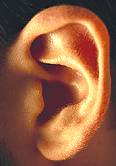MRI Improves Diagnosis in Children with Hearing Loss
An abnormal cochlea and abnormal cochlear nerve are the most common inner ear abnormalities in sensorineural hearing loss (SNHL), and inner ear abnormalities are more common among patients with severe and profound SNHL and in children with unilateral hearing loss, according to a report in the September issue of the Archives of Otolaryngology -- Head & Neck Surgery.

WEDNESDAY, Sept. 17 (HealthDay News) -- An abnormal cochlea and abnormal cochlear nerve are the most common inner ear abnormalities in sensorineural hearing loss (SNHL), and inner ear abnormalities are more common among patients with severe and profound SNHL and in children with unilateral hearing loss, according to a report in the September issue of the Archives of Otolaryngology -- Head & Neck Surgery.
John E. McClay, M.D., of the University of Texas at Southwestern Medical Center in Dallas, and colleagues performed a retrospective review of children with SNHL identified via MRI to determine both the incidence and types of intracranial and inner ear abnormalities in pediatric patients with SNHL.
Of 227 children with SNHL (aged 1 month to 17 years) who underwent MRI, 170 had clinical and MRI information available to be included in the study. The researchers report that among the 271 ears with SNHL, bilateral SNHL (59 percent) was more common than unilateral SNHL (41 percent). Overall, inner ear abnormalities occurred in 108 of 271 ears (40 percent). The investigators found that an abnormal cochlea and abnormal cochlear nerve were the most common abnormalities.
"Children with severe and profound SNHL have a greater percentage of inner ear anomalies than children with mild or moderate SNHL," the authors conclude. "Children with unilateral hearing loss have a greater percentage of inner ear anomalies than children with bilateral SNHL."
Abstract Full Text (subscription or payment may be required)
Copyright © 2008 ScoutNews, LLC. All rights reserved.